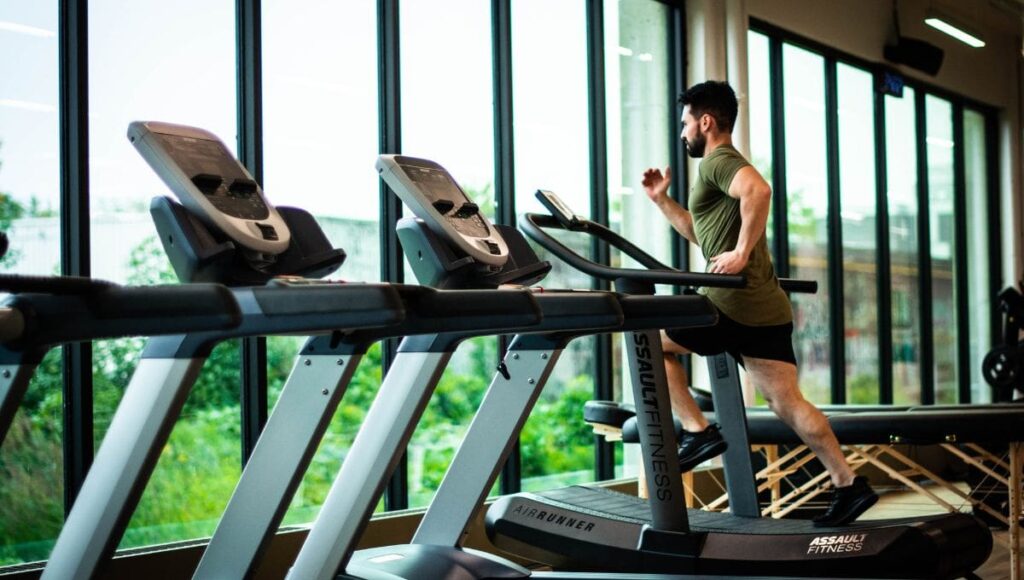What is the best exercise for long-term fat loss? Is there such a thing? Believe it or not, there is one thing you could be doing now to improve your body’s ability to use fat cells as source of energy. Find out what it is in the paragraphs below.
When it comes to shedding fat and enhancing overall fitness, the right kind of exercise can make a significant difference. While quick fixes and trendy diets might offer immediate results, they often fall short in providing sustainable, long-term solutions. The key lies in understanding how different exercises influence our body’s energy systems, particularly in how we burn fats and carbohydrates. This article delves into the science behind exercise intensities, focusing on a specific zone that is optimal for long-term fat loss.
Beginning your own fat loss journey requires more than just an understanding of which exercise to perform. It involves a deep dive into how our bodies function and how we can leverage this knowledge to our advantage. Various exercise intensities impact our energy systems in distinct ways, influencing how we burn fat during and after exercise. It’s not just about the calories burnt during a workout session; it’s about how these exercises condition our bodies over time.
One often overlooked yet crucial aspect of exercise is the intensity at which we perform our cardio workouts. Contrary to popular belief, more intense isn’t always better. There’s a specific cardio zone that’s particularly effective for not just burning fat during the exercise, but also enhancing the body’s ability to utilise fat as a fuel source long-term.
The information in this article was largely based on the knowledge from Thomas DeLauer and what he said in a recent video. Thomas DeLauer is a celebrity trainer and health author. His YouTube Channel has more than 3.5 million subscribers and he has been on the cover of numerous international magazines.
This article explores this zone in detail, providing practical advice on how to incorporate it into your fitness regime for sustained fat loss. So let’s dig deep into it.
Read More: How to Reduce Hunger While Dieting
Understanding Exercise Intensities and Fat Loss
“Manipulating the zones in which you do your cardio is one of the biggest levers that you can pull for overall conditioning and training your body to use different energy systems,” explains fitness expert Thomas DeLauer. This statement underscores the importance of exercise variability in our fitness routines. By exposing ourselves to different exercise intensities, we can train our body to become more efficient at using fats and carbohydrates as energy sources.
Thomas DeLauer emphasises the effectiveness of Zone 2 cardio, which operates at 60 to 75% of your VO2 max. This zone allows you to engage in a light jog or brisk walk while still maintaining the ability to hold a conversation. “Zone 2 cardio ended up being able to utilise fat 40% more effectively,” DeLauer notes, highlighting its benefits beyond just the workout duration.
The research supports this, with DeLauer mentioning a study in the Journal of Applied Physiology that found significant improvements in fat utilisation after 12 weeks of Zone 2 training. “Zone 2 was almost like an accelerated fast on their body,” he adds, comparing its effects to those of fasting on metabolic efficiency.
5 Underrated Habits to Lower Body Fat Percentage
Best Exercise for Long-Term Fat Loss
So, what’s the best exercise for long-term fat loss? Based on DeLauer’s insights and supporting research, Zone 2 cardio stands out. This exercise intensity is not only manageable for most people but also effective in training the body to use fat more efficiently, both during and after workouts.
For optimal results, individuals should aim to incorporate 30 to 60 minutes of Zone 2 cardio into their routine 2 to 4 times a week. This can include activities like walking on an incline, light jogging, or cycling at a moderate pace. Combining Zone 2 cardio with higher-intensity workouts can further enhance fitness levels and fat loss, making for a well-rounded exercise regimen.

Do This Every Day to Lose Body Fat Faster
Which Exercises Are Best to Keep Zone 2 Cardio?
Zone 2 cardio can be accomplished through various exercises that maintain your heart rate within the specific Zone 2 range (60-75% of your maximum heart rate). The key is to choose activities that you can sustain at a moderate intensity for an extended period. Here are some of the best exercises for engaging in Zone 2 cardio:
- Walking: Brisk walking, especially on an incline, can effectively keep you in Zone 2. It’s accessible, easy on the joints, and can be done almost anywhere.
- Cycling: Riding a bike, whether outdoors or on a stationary bike, allows for easy adjustments of intensity. Maintaining a steady pace without pushing too hard can keep you in the desired heart rate zone.
- Running: A gentle jog or a steady run, depending on your fitness level, can be excellent for Zone 2 training. It’s vital to pace yourself to avoid drifting into a higher intensity.
- Rowing: Using a rowing machine or rowing on water provides a full-body workout that can easily be adjusted to stay within Zone 2. It’s also low impact, reducing the risk of injury.
- Swimming: Swimming at a steady, moderate pace can keep you in Zone 2 while providing a low-impact, full-body workout. It’s also great for improving lung capacity and endurance.
- Elliptical Trainer: This machine offers a low-impact cardiovascular workout that can easily be maintained at a Zone 2 intensity. Adjust the resistance and pace to stay within the correct heart rate range.
The best Zone 2 cardio exercise is one that you enjoy and can perform consistently. It’s also beneficial to vary your activities to engage different muscle groups and avoid boredom. Whichever exercise you choose, the focus should be on maintaining a consistent, moderate intensity that allows for sustained effort and effective fat burning.

Related: Worst Diet Mistakes For Losing Fat
Long-term fat loss isn’t about quick fixes or adhering to the latest exercise trends. It’s about understanding how our bodies work and using that knowledge to our advantage. Zone 2 cardio offers a science-backed approach to not only burning fat but also improving our body’s ability to use fat as an energy source.
Incorporating Zone 2 cardio into your exercise routine is a sustainable and effective strategy for fat loss. It’s an approach that respects the body’s natural energy systems, promoting health and fitness without the burnout associated with high-intensity workouts.
Ultimately, the best exercise for long-term fat loss is one that you can maintain consistently. By integrating Zone 2 cardio into your weekly routine, you can achieve sustained fat loss, improved metabolic health, and a stronger, more resilient body.
Check out the video below from Thomas DeLauer in which he explains further about the best exercise for long-term fat loss.
Does Late-Night Eating Disrupt Metabolism?
How to Lose Weight Fast and Transform Your Body
How to Combine HIIT and LISS to Lose Fat Faster
How To Tell If You Are Doing Zone 2 Cardio for Fat Loss?
Determining whether you’re in Zone 2 cardio requires an understanding of your body’s responses to exercise. Zone 2 is typically defined as 60-75% of your maximum heart rate, a level where your body efficiently burns fat as fuel, improving your aerobic fitness without overstraining. Here are practical ways to identify if you’re in this crucial training zone:
- Heart Rate Monitoring: The most accurate method is using a heart rate monitor. Calculate your maximum heart rate (a rough estimate is 220 minus your age), and aim to maintain 60-75% of this number during your cardio. For example, a 30-year-old would have an estimated maximum heart rate of 190 beats per minute (bpm), and their Zone 2 would be between 114 and 142 bpm.
- The Talk Test: Zone 2 is an intensity where you can carry on a conversation or speak complete sentences without much strain. If you’re breathing too hard to talk comfortably, you’re likely above Zone 2. If you can sing, you’re probably below it.
- Perceived Exertion: This subjective method involves assessing how hard you feel like your body is working. On a scale from 1 to 10, where 1 is sitting still and 10 is your maximum effort, Zone 2 should feel like a 4 or 5 — comfortable and sustainable.
- Observing Physical Cues: In Zone 2, you should sweat but not excessively, and feel that your breathing is quicker yet not laboured. You’re working but not pushing to the point of discomfort.
While heart rate monitors provide the most accuracy, combining these methods can offer a comprehensive understanding of your exercise intensity. Regularly training in Zone 2 can significantly enhance your aerobic fitness, increase fat oxidation, and improve overall endurance, making it a valuable component of any fitness regimen.
10 Proven Ways To Speed Up Fat Burning
Why You Keep Sabotaging Your Weight Loss Progress (And What to Do About It)
Source link: https://www.boxrox.com/best-exercise-for-long-term-fat-loss/ by Robert Born at www.boxrox.com






